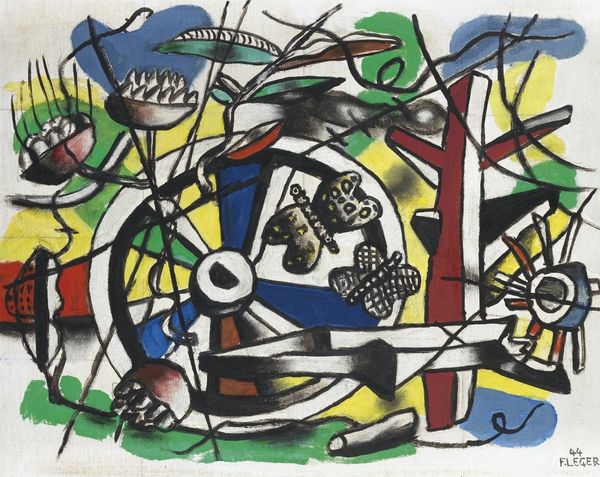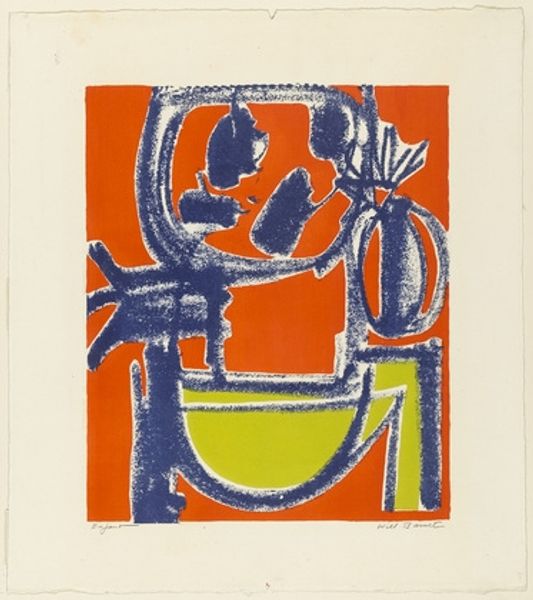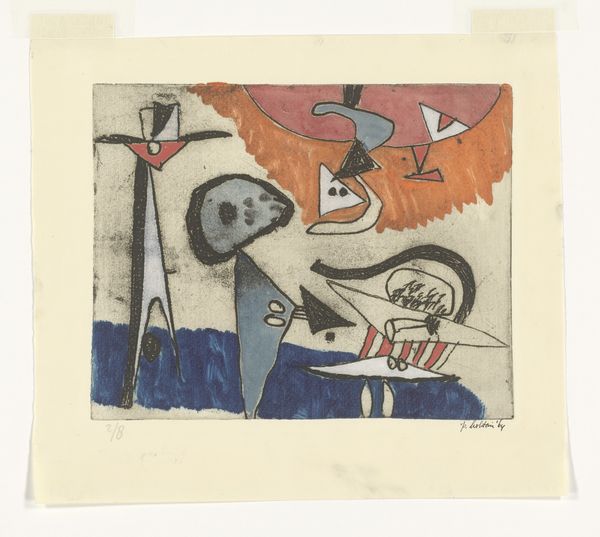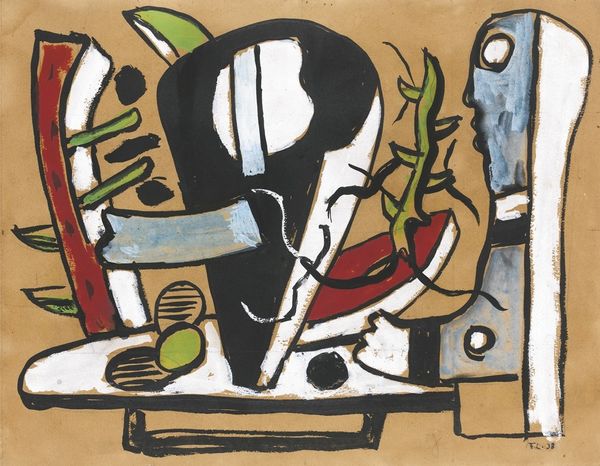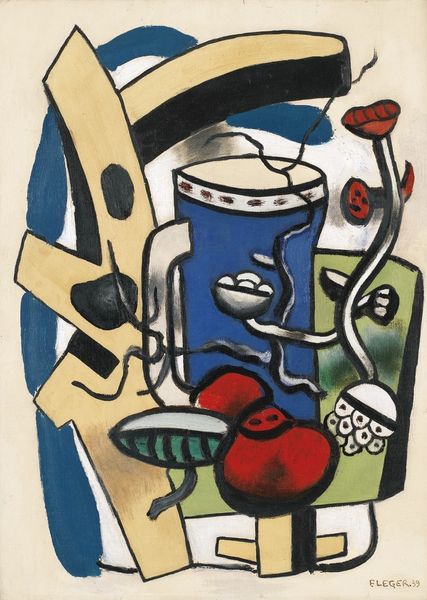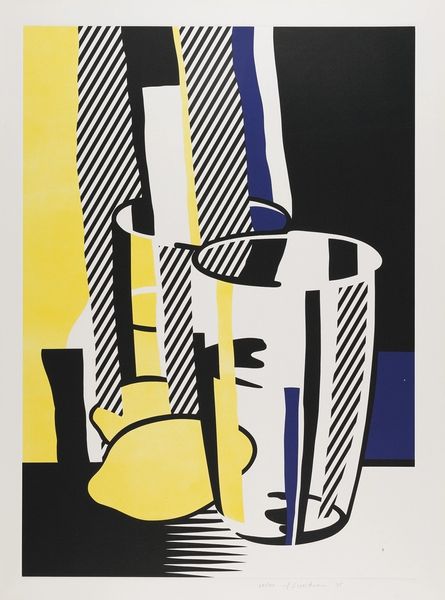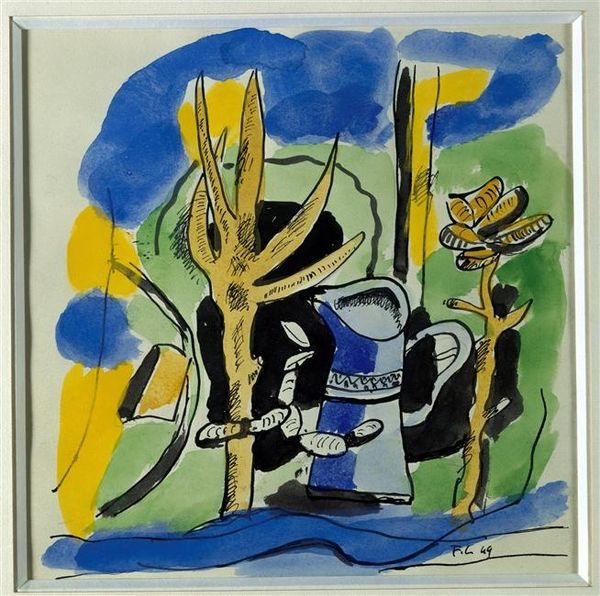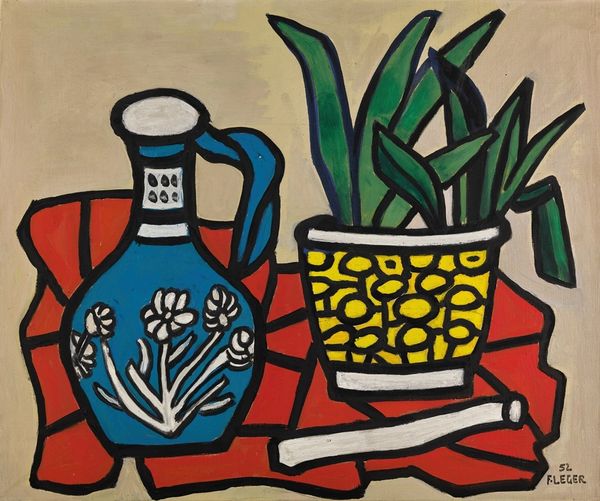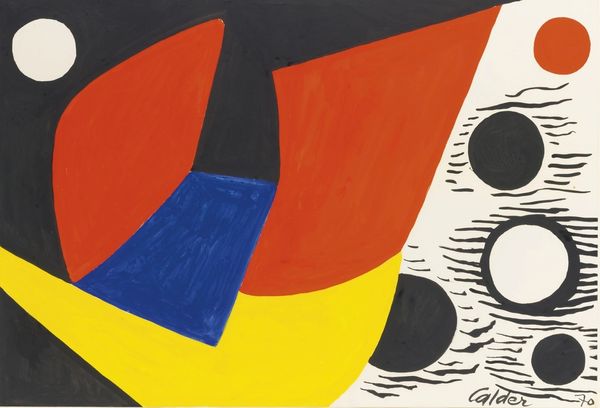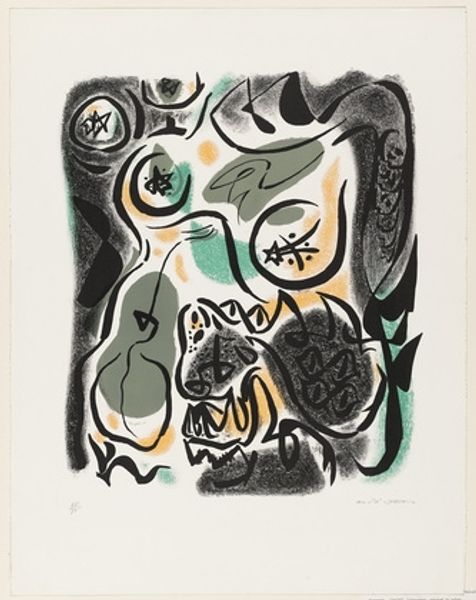
Copyright: Modern Artists: Artvee
Editor: So, here we have Fernand Léger's "Still Life with Blue Vase," created in 1951. It’s a print, so a graphic art piece. The strong lines and bold colors create such a striking composition. How would you interpret this work through a formalist lens? Curator: We might begin by observing the structural elements, notably Léger's employment of line and color. Note how the interplay of geometric shapes and organic forms generates tension and dynamism, how primary hues against the monochromatic backdrop intensify visual impact. Can you see how the abstracted forms create a dialogue between representation and pure abstraction? Editor: I can see that. The blue vase, for instance, is both a recognizable object and an exercise in geometric simplification. Is that typical of Léger's prints? Curator: Indeed. Consider Léger’s broader body of work and how it echoes the aesthetics of the Machine Age, incorporating fragmented forms and celebrating the beauty found in industrial motifs. Examine the relationship between line and volume in other works of this period; consider also the philosophical underpinnings driving such visual choices. Where do you find that philosophy? Editor: That’s fascinating. So, you're saying that by focusing on these formal elements—the line, shape, color—we can decipher meaning inherent in the work, related to broader themes. Curator: Precisely. Through rigorous semiotic analysis, we unveil a richer understanding of its visual grammar and symbolic potential within the constructivist movement. What did you learn by this print of Fernand Leger? Editor: I learned to think more about how colors and shapes interplay. It opens up new ways to look at familiar images! Curator: A worthy consideration in still life analysis.
Comments
No comments
Be the first to comment and join the conversation on the ultimate creative platform.
